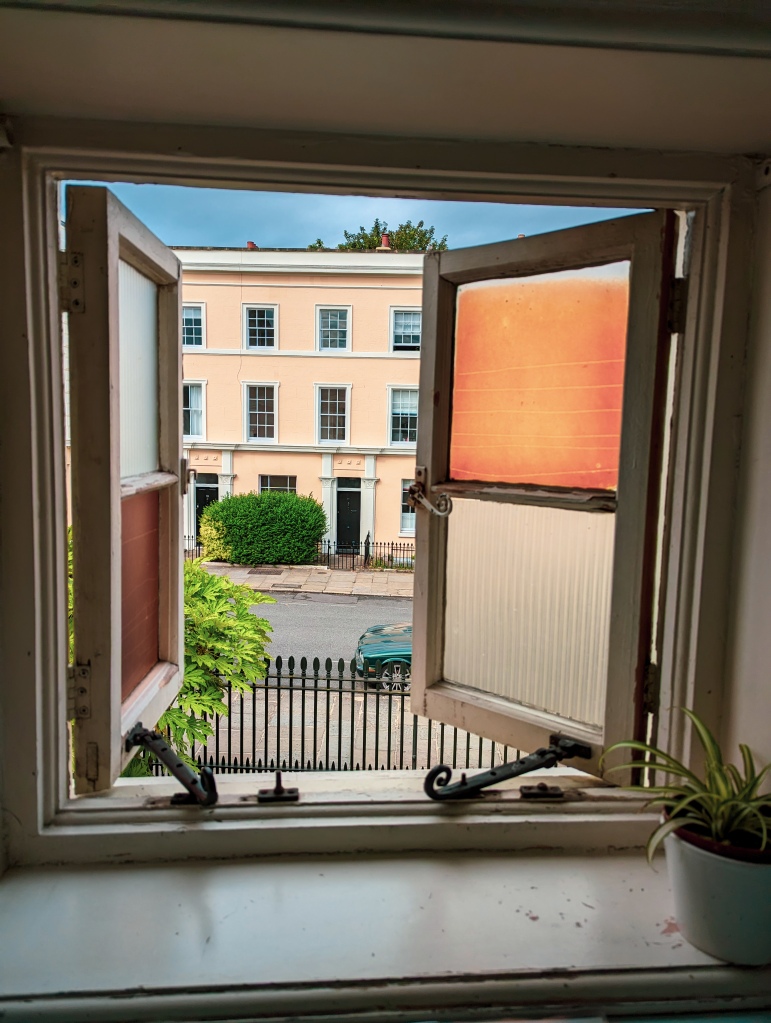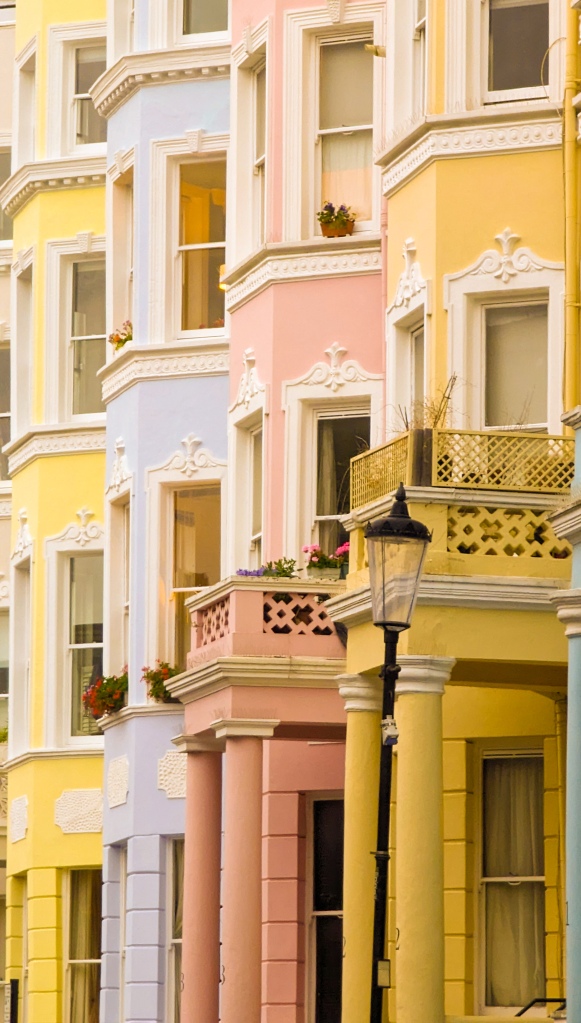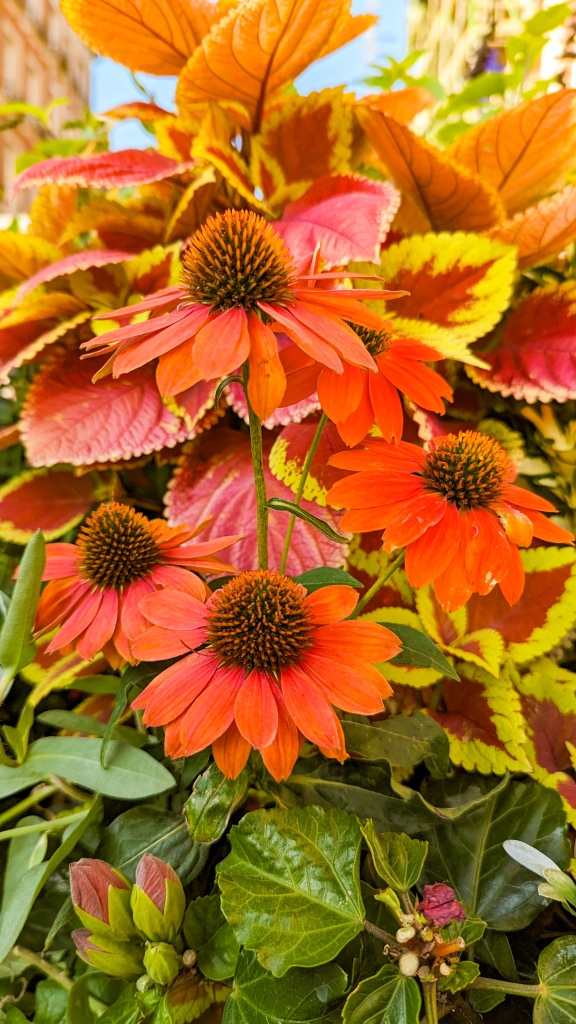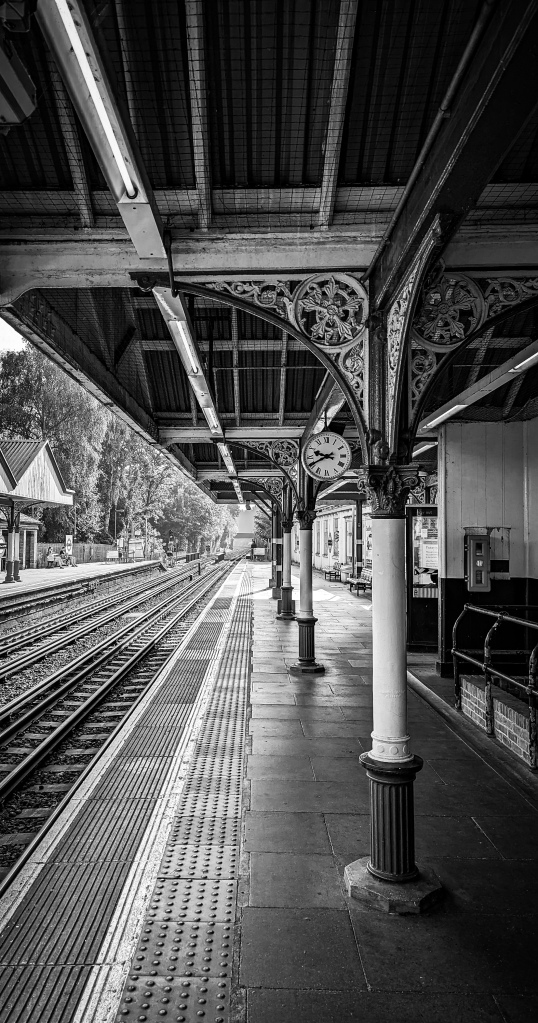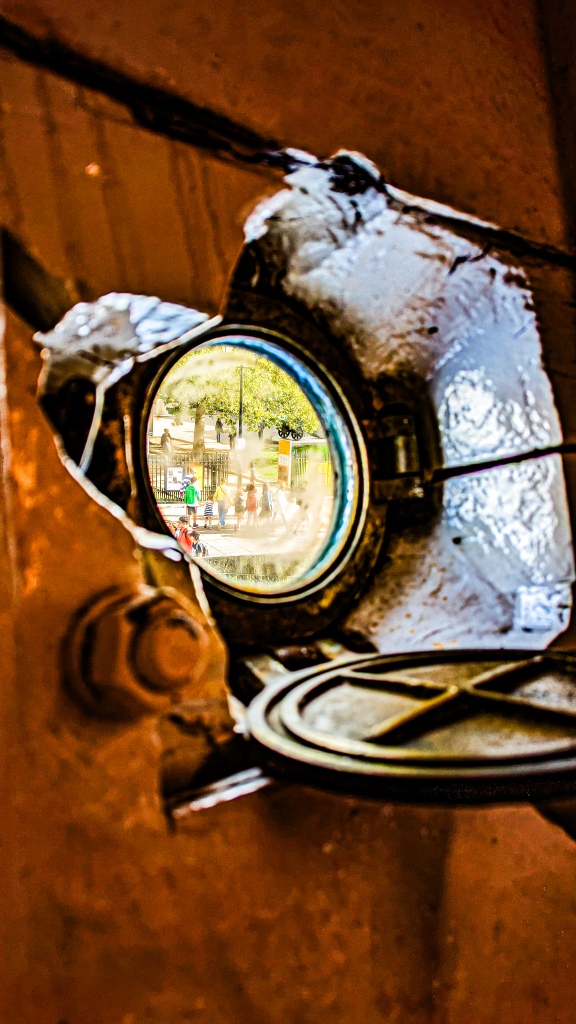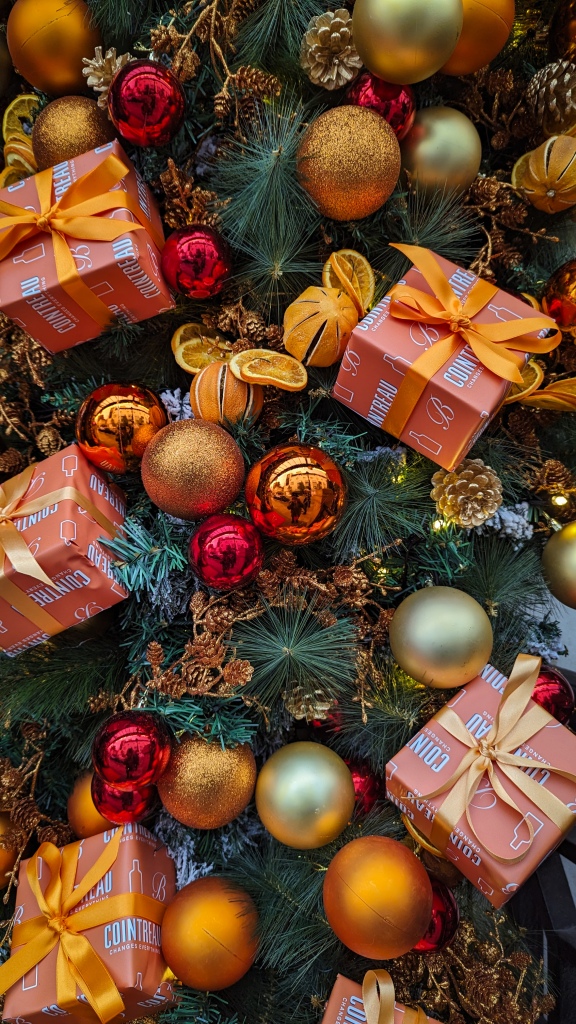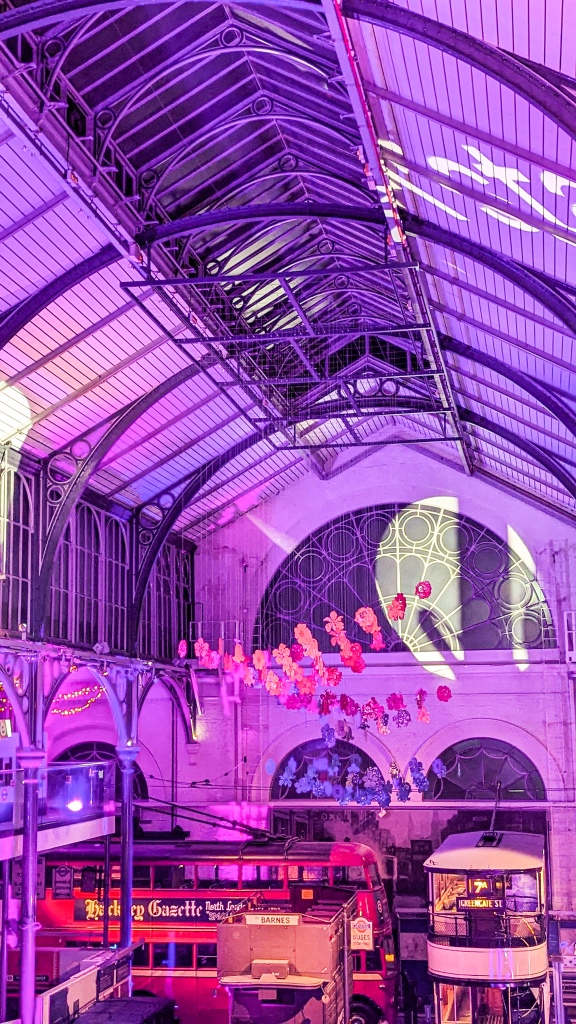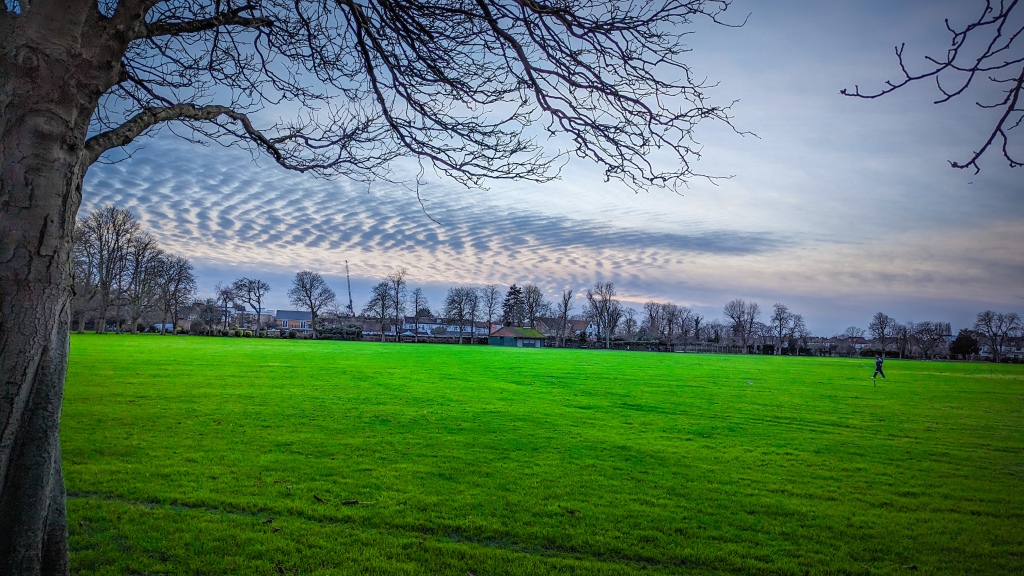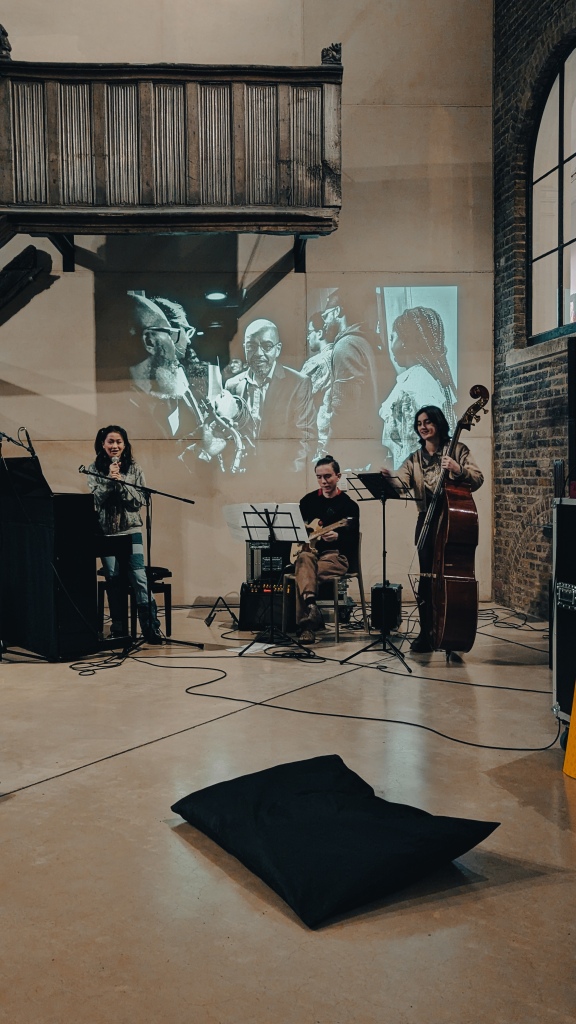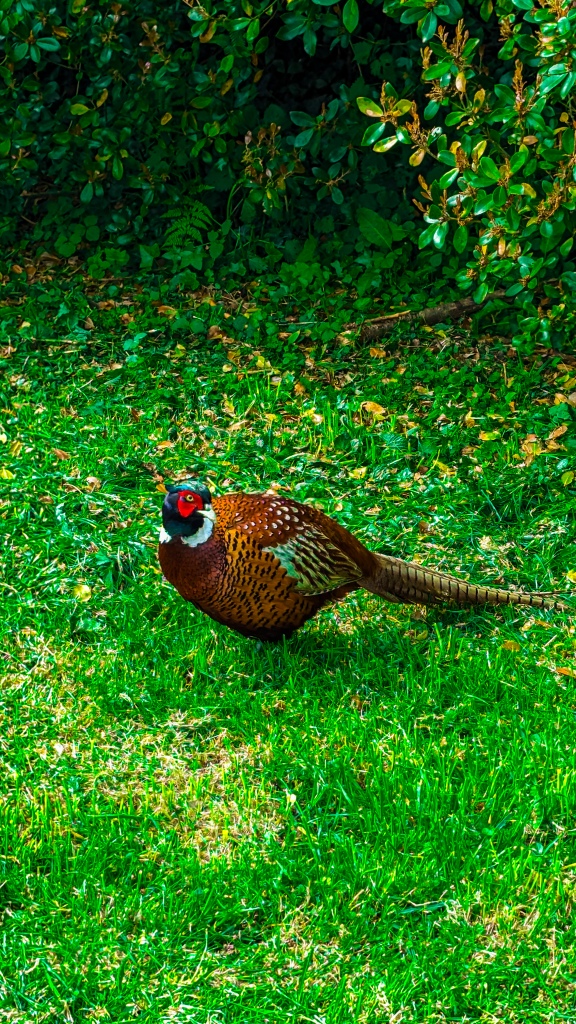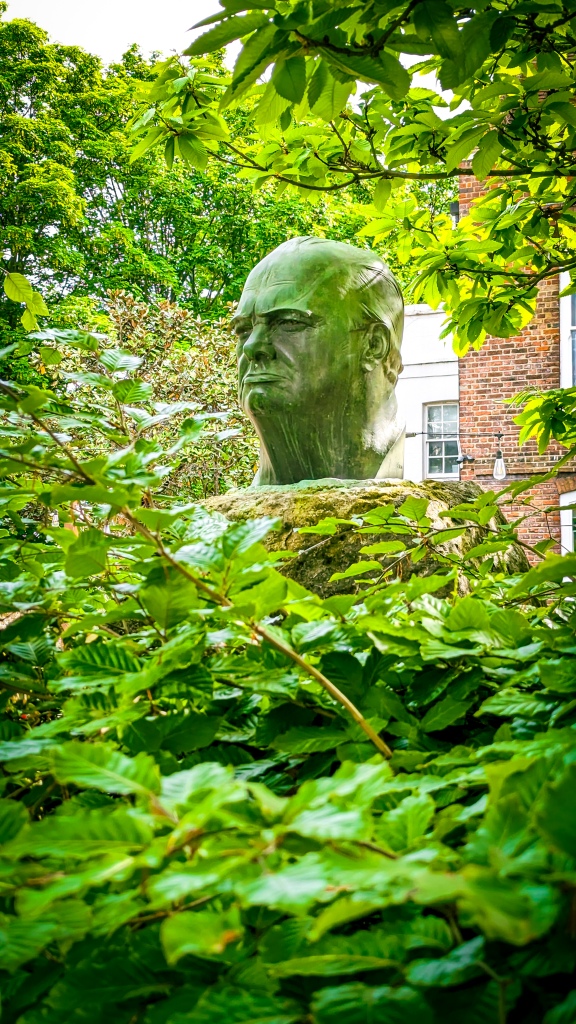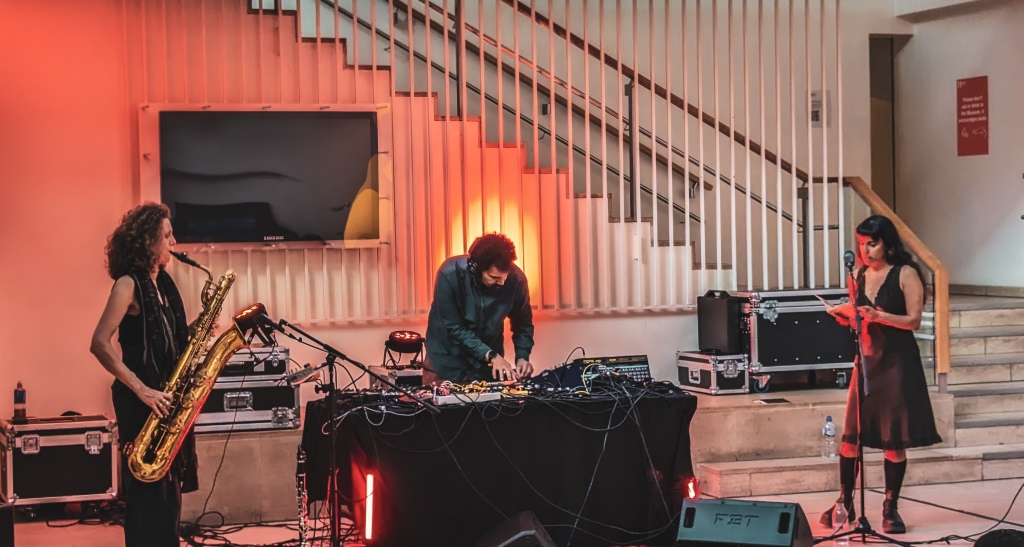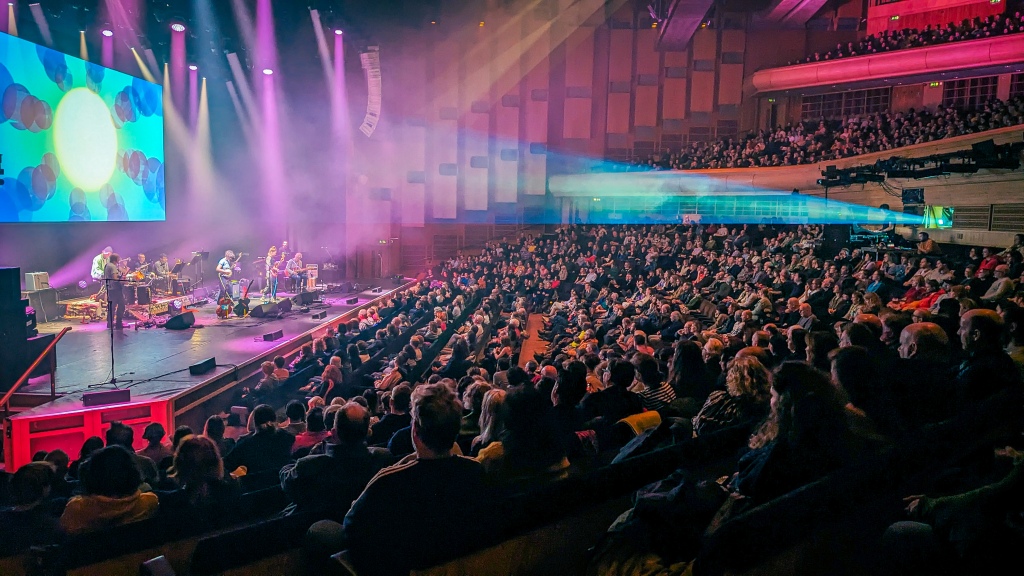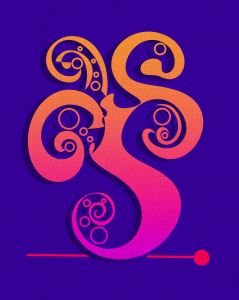London Transport Museum in Covent Garden
Dr. Suneel Mehmi
01.04.2024
All views in this article represent my personal views as a private and political individual and do not represent the views of any of the organisations I work at. My expertise? My PhD involved the early history and reception of photography in its political and legal contexts.
‘Don’t survive it. Live it.’ These were the words that someone said to me recently. Survival is the most important thing for us as a species. In the field of psychology, they tell us that the human mind is geared towards survival. That’s where we get our intelligence from: evolutionary adaptations for surviving. But with survival, you have to live it too. You have to experience the fight.
The new photographic display ‘Echoes of the Blitz’ shows how we have to live through our survival. The exhibition ‘explores how Underground stations and metro systems provide shelter to citizens during periods of war – now and in the past’ [1]. How, when you are confronted with death and mortality, when you look death in the eyes, you fight for breath, sense and security. How you find shelter in unexpected places in extreme circumstances and still make a life for yourself. How throughout history and its rivers of blood, throughout the modern period and the supposedly ‘civilised’ Western world, people have hidden in fear to preserve their life, children, culture and heritage.
In total, the photography gallery displays:
‘70 striking images, including historical images from the Museum collection alongside 38 contemporary photographs by six renowned, mainly Ukrainian, documentary photographers.’ [2]
Some of the most recognisable images of the war have been of people sheltering in the London Underground shelters and these icons of memory are given an update and a new relevance through a juxtaposition of the scenes in the Underground shelters in Ukraine.
According to the London Transport Museum, what we are seeing is:
recent photography of ordinary Ukrainian citizens in extraordinary circumstances. They are shown sleeping, waiting, cooking, washing clothes, caring for their pets and creating temporary make-shift homes in Metro stations in the Ukrainian capital Kyiv and its second largest city Kharkiv. These scenes are ‘echoed’ in the black and white archive images of Londoners taking refuge in Tube stations during the Second World War. [3]
The aim of the exhibition is to:
present strong parallels of human experience across different locations and conflicts. This exhibition documents the resilience of people in Ukraine and London during times of war and the reality of having to escape from aerial bombardment. [4]
Other comments have been made about the aims of the exhibition. Matt Brosnan, Head Curator, London Transport Museum, said that the photographs ‘show the resilience and tragic reality of war’ [5]. Stefan Günther, Project Manager, Photo, n-ost, said that the exhibition is ‘an opportunity to perceive the current war in Ukraine on a very personal level, away from the wider political and media glare’. [6]
I think that the exhibit makes concrete the idea of Ukrainians rather than Ukraine. All nations are fictions. It is the people there that are real. And in these photographs, we see the people directly and how they are having to live. And it is photography and its truth that allows us to see the reality behind the abstractions of the newspapers. It is photography that allows us to see them face to face and come directly into their lives. As a matter of fact, the frames of the exhibition invite us to do this. The black and white World War photographs have black frames. These photographs are framed and closed off to us – because as we know, the past is a foreign country. However, the photographs of the Ukrainians are not framed. We are in direct contact with them through our eyes and our perspectives. We are immersed into their world. There is no separation from us through the device of the frame. What is happening there is spilling out into our world, including us. Asking us to contemplate, sympathise.
Some historical details taken from the London Transport Museum website allow us to see the facts behind what is being portrayed:
London’s air raid sirens sounded almost every day for eight months from September 1940 to May 1941 and again between June 1944 and March 1945. Sheltering in Tube stations overnight became a routine. There were special admission tickets, bunk beds on the platforms, refreshments and, at some stations, libraries, music and live entertainment.
In Kyiv, sheltering in the Metro peaked at around 40,000 people at the beginning of the Russian invasion in February 2022. Some stayed overnight, others for days or weeks, returning to the surface only for groceries or to wash. Those who lost their homes lived underground for months.
Kharkiv, close to the border with Russia, experiences more frequent shelling. People spent more time in the Metro there, creating comfortable homely spaces with bedding, tents, carpets, decorations and toys. [7]
After you have read the blurb of the exhibition, the first photograph that dominates is ‘Woman in tent at Dorohozhychi station’ by Maxim Dondyuk, 2 March 2022. The woman defensively has her hand held to her shoulder, covering her chest: a striking image of someone in need of protection, someone that has to defend themselves from an unjust attack. She has to comfort herself with that hand on her shoulder. The woman stands out isolated from the crowd behind her that is not visible, vulnerable and isolated, perhaps like the situation of Ukraine itself – a country that has been left to fend for itself by the ‘civilised’ world of modernity which has disappeared when it is needed. She looks directly at the camera: she implores us to look upon her as the fate of her people, the innocent civilians subjected to the imperialism of the modern day state and its brutality, to their unjust greed and their uncontrolled and obscene desire for control, domination, land and resources. She asks us to acknowledge our role, the roles of our countries that have left her in this position. Does she ask us why? Her face is touched with sadness and suffering. She is in – through the connotations of the opening of the tent – in the dark den of despair, half-eaten by the hole, the absence.
In terms of its historical importance, the exhibition features one of the first ever photographs that were taken when the war broke out and the Ukranians sheltered in the underground stations. Viacheslav Ratynkyi, that on the very first day of the Russian invasion on 24 February 2022 he went down into the Metro and brought a camera so that he could document the situation. [8] The people have used the edges of the stairs along the walls as seats to create a clearing in the middle so that others can move up and down. They have been resourceful to give themselves make-shift seats that would be extremely uncomfortable to sit upon for long periods of time. They have had to adapt for survival and protection as a group, a group and species bound together by necessity and the cruel games of the politicians and the modern day states that are supposed to serve and protect them, the states that are supposed to be bound by the laws and justice. In response to the unjust throne of the state and its modern day king, who cannot sit as he should, the people sit heroically and patiently, in solidarity and suffering. They begin the long wait for peace, the desire of every thinking and feeling human being. These people are the human contrast to the inhuman face of power and brutality, the fascism of the modern-day state.
When I say I am Indian and come from India, it is the India of the people, not the India of the politicians or the intolerant and oppressive citizenship that they want to create. The state that they create is not India. What they create is corruption. We, we the people, we are India. And here, in this photography exhibit, we have the Ukrainians and Ukraine. These people are not defined by the war. In this exhibit, we see them doing the things that we all do every day: listening to music, learning, reading, dying their hair. Holding each other for comfort. They are victims of the state and the politicians. But they have organised themselves. They have created a space away from the brutal games of the state and its quest for total domination. Across world history, across the suffering that man has created, we look at the victims of the politicians and how they have tried to carve out another space and another reality beyond what the unimaginative and corrupt state has imagined. People who live through their struggle for survival. With resilience. As I look at these photographs, I know that one day, the modern-day state with its evils will fall. It has to. Because the spirit of the people will one day overcome the absurd egotistical limitations of geographical and racial boundaries. You can see this in the people and the photographs. You can feel the power of pure being. The desire to move out of the control of others. The spirit of resistance. The spirit of overcoming. Because these people are not trying to create a nation state down there in the underground shelters. They are trying to create a human community: a sphere of protection and life. It is a world meant to foster life – the world that we are trying to create by countering domination with the philosophy of live and let live, by countering selfishness with the desire for preservation, by countering the desire for destruction and death with the desire for life and the future.
If you want to see what a real hero looks like, don’t look at the soldier with blood on his hands, the killer for the state. Look at the everyday hero that fights for survival in an oppressive world and the games of control around them by trying to create another reality – the reality of peace and life. Freedom from death, envy, killing, exploitation. Freedom from the state and its obscenity and blood lust. The people that have created history, tradition and culture by surviving – by fighting to survive and live through that survival – and not by dying and killing in war.
[1] https://www.ltmuseum.co.uk/news/new-echoes-blitz-underground-shelters-ukraine-and-london-photography-exhibition-now-open#:~:text=A%20new%20photography%20exhibition%3A%20Echoes,now%20and%20in%20the%20past.
[2] Ibid.
[3] Ibid.
[4] Ibid.
[5] Ibid.
[6] Ibid.
[7] Ibid.
[8] Ibid.
